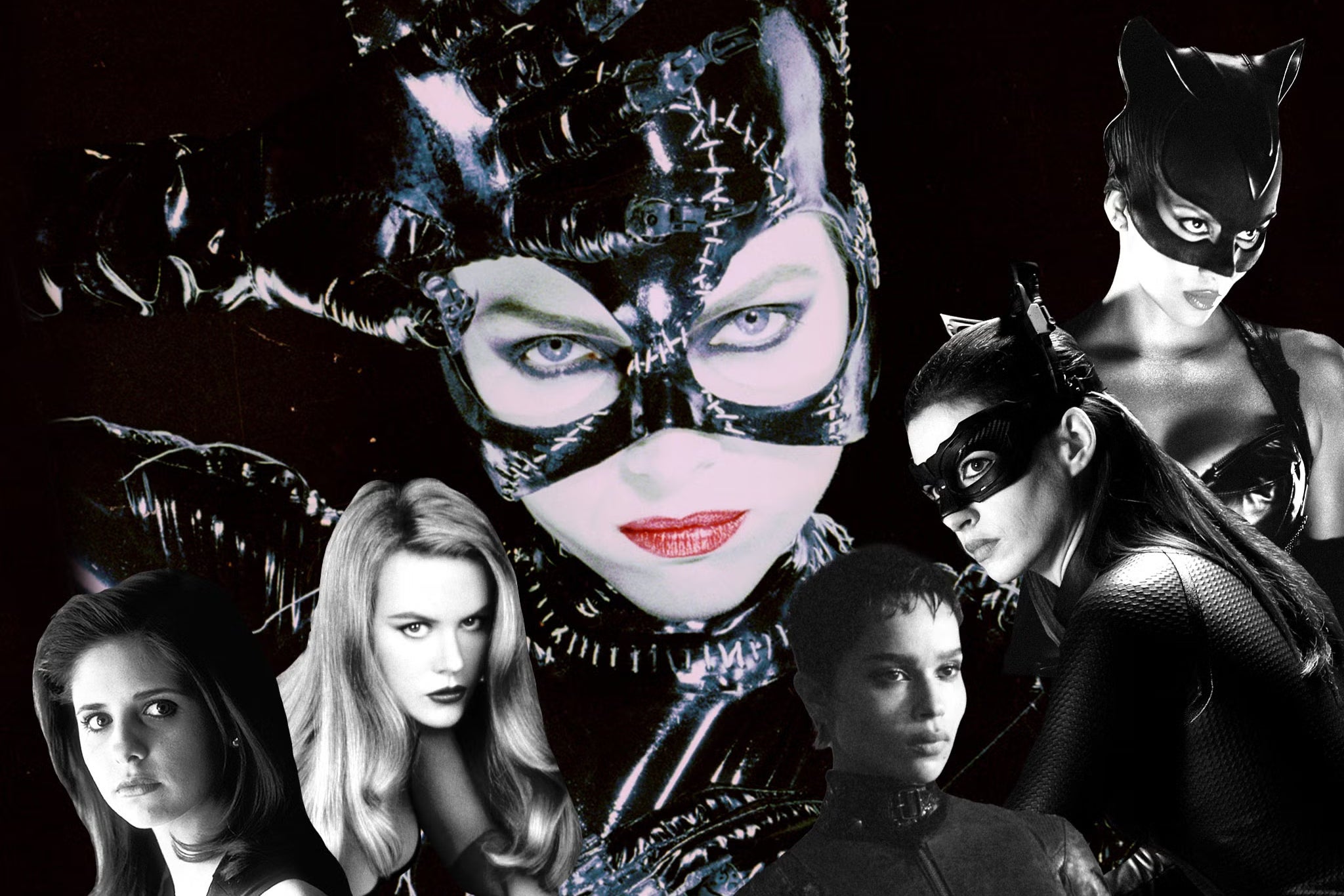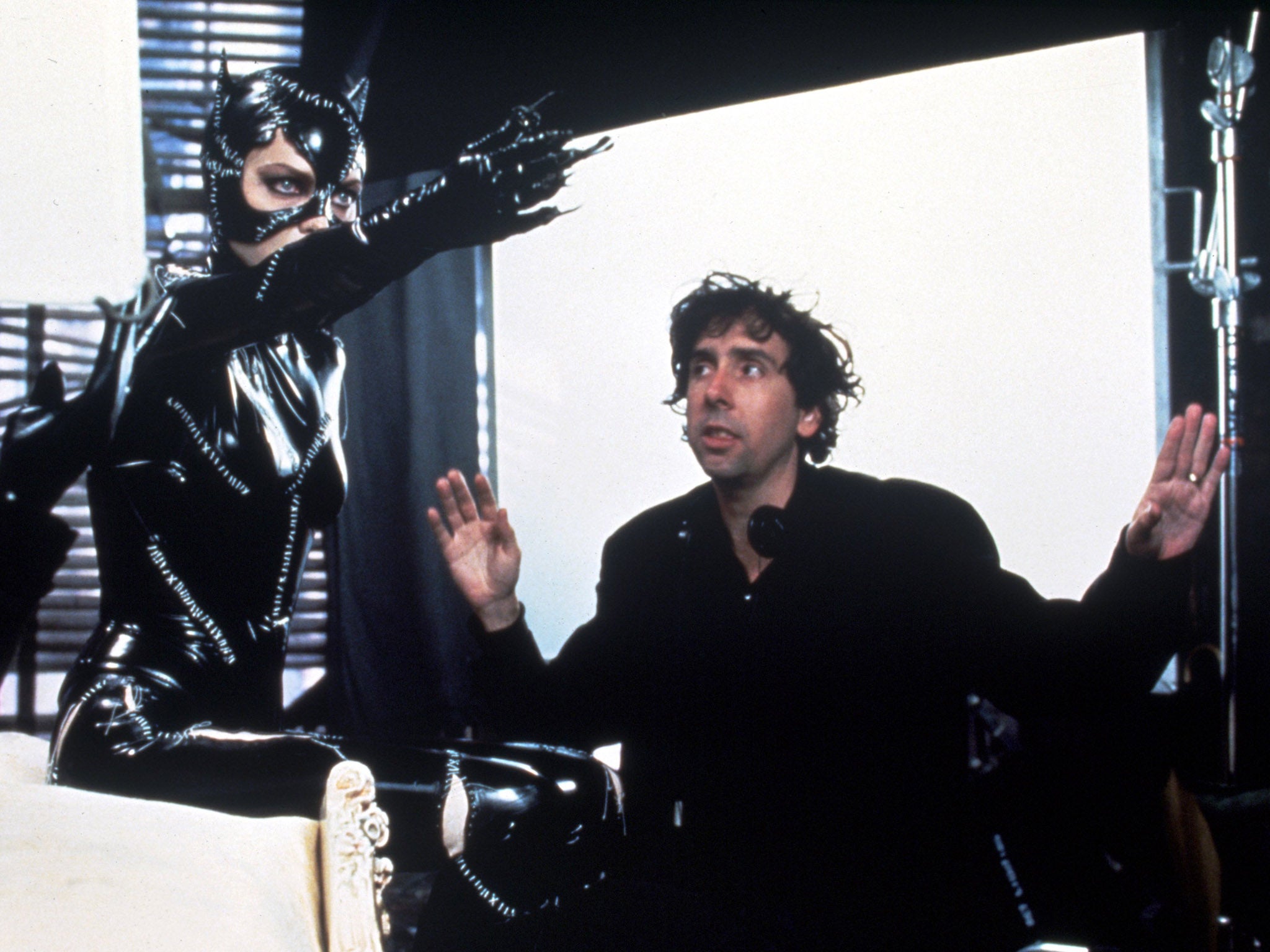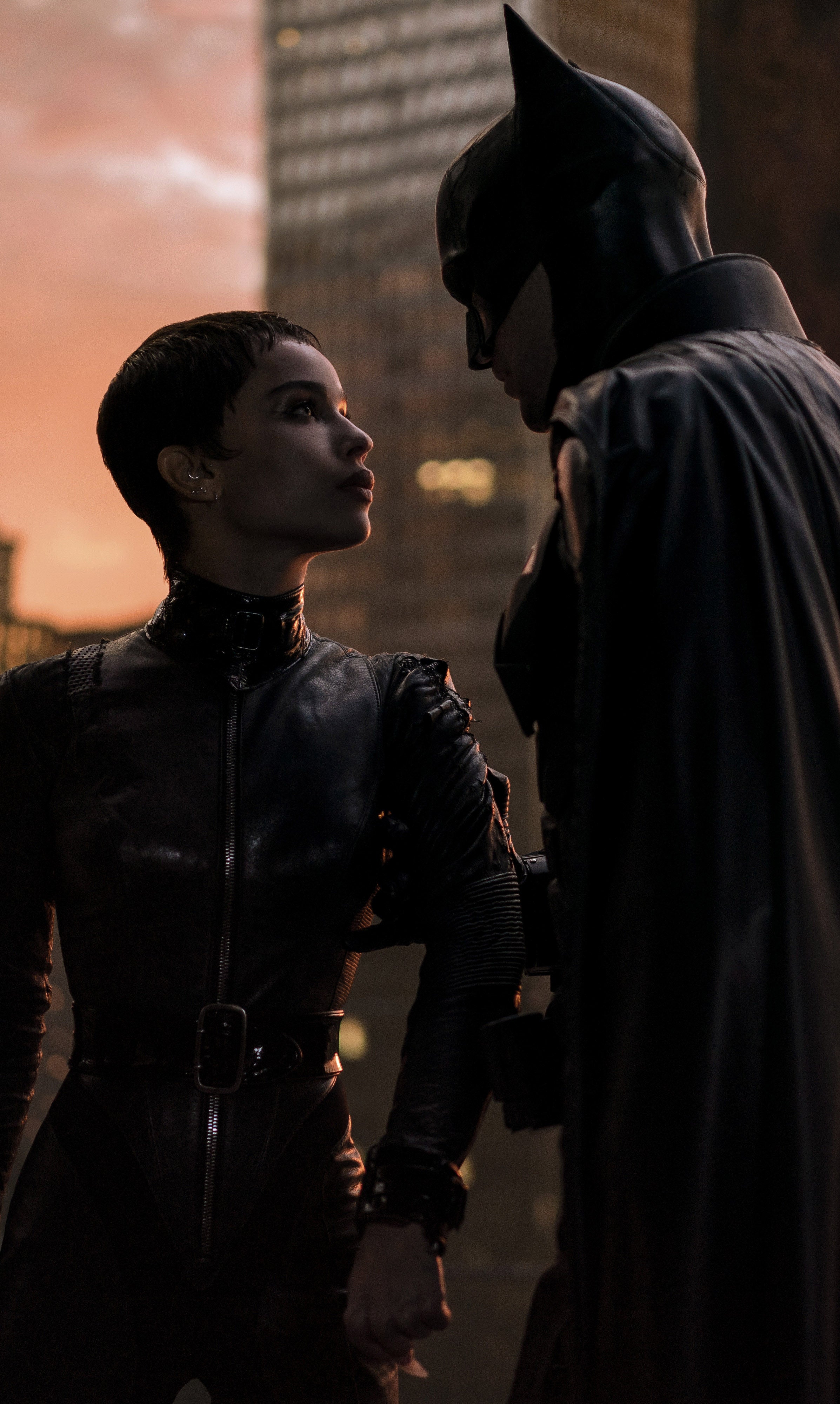Amnesia, pet grooming, and Sarah Michelle Gellar: Unearthing the gonzo Catwoman movies that never were
As Zoë Kravitz becomes the latest actor to slip into Catwoman’s leather ensemble in ‘The Batman’, Adam White explores the chequered history of Catwoman spin-off movies and sequels – from the Nicole Kidman vehicle that wasn’t, to the surreal black comedy that nearly brought back Michelle Pfeiffer


Your support helps us to tell the story
From reproductive rights to climate change to Big Tech, The Independent is on the ground when the story is developing. Whether it's investigating the financials of Elon Musk's pro-Trump PAC or producing our latest documentary, 'The A Word', which shines a light on the American women fighting for reproductive rights, we know how important it is to parse out the facts from the messaging.
At such a critical moment in US history, we need reporters on the ground. Your donation allows us to keep sending journalists to speak to both sides of the story.
The Independent is trusted by Americans across the entire political spectrum. And unlike many other quality news outlets, we choose not to lock Americans out of our reporting and analysis with paywalls. We believe quality journalism should be available to everyone, paid for by those who can afford it.
Your support makes all the difference.The secret weapons of the Batman movies have always been their women: Uma Thurman’s Poison Ivy emerging from a pink gorilla suit in Batman & Robin; Drew Barrymore and Debi Mazar as draggy Two-Face acolytes Sugar and Spice in Batman Forever; Zoë Kravitz sporting quite literally all of the wigs as Catwoman in next week’s franchise reboot The Batman. It’s something of a franchise tradition by this point. Take one stone-faced dude in a cape, add a lady who acts circles around him.
Never bettered, though, is Michelle Pfeiffer’s Catwoman. Put differently, Pfeiffer doesn’t so much steal the show in 1992’s Batman Returns as whack it, rob it, and leave it freezing and penniless on a Gotham City street corner. As Selina Kyle – a timid secretary pushed out of a window by her tyrannical boss and licked back to life by a litter of cats – Pfeiffer is camp, alluring, tragic. It’s not hyperbole to call it one of the most assured and multi-faceted performances in superhero movie history. Scratch that: movie history in general. It only makes her lack of a sequel that much more galling.
Despite appearing in three different incarnations of live-action Batman movie since 1992 – as well as numerous animated projects released on TV and home video – Catwoman never got the spin-off film Batman Returns’ climax so memorably gestured towards. The film’s final shot sees Catwoman’s shiny cowl – enhanced by the silicon paint slathered all over it by the film’s makeup crew – peering up at the bat signal, in the process confirming that she’s still clinging onto the last of her nine lives. Regardless of that irresistible tease, and Pfeiffer’s eagerness to reprise her role, Catwoman: The Movie didn’t happen. At least not in the way everyone wanted.
Halle Berry took on the role for 2004’s notoriously dismal Catwoman. But its horrors were a result of its protracted journey to the screen: it came after years of a Catwoman movie being stuck in development hell, with numerous writers and directors taking a stab at the character and various actors linked with playing her. Since then, Hollywood seems to have decided she works best as a Batman supporting character, which seems misguided.
The earliest mooted Catwoman spin-off is unlike anything that’s ever made it to cinemas. Screenwriter Daniel Waters – who is best known for scripting the black comedy Heathers – had previously written Batman Returns, a ludicrously dirty movie that always felt like a gonzo kink manual that’d somehow slipped past the censors. For his Catwoman spin-off – which, for a time, would have also been a reunion between Pfeiffer and her Returns director Tim Burton – Waters doubled-down on the strange, scripting an oddball feminist satire that seems to actively despise superhero movies.
Leaked online in the early Noughties, Waters’ Catwoman takes place shortly after Selina’s near-murder at the end of Batman Returns. The events of the film left her with amnesia, and she’s found recuperating in a desert town named Oasisburg. She works in a casino, is regularly harassed by lascivious men, and expresses withering dismay at a band of superheroes – called The Cult of Good – who claim to protect the town. An elderly Mexican “hag” helps Selina regain her memories, and she uses her skills to take down the Cult, who aren’t the protectors they claim to be.
Waters’ world-building is vivid: there are “jaw-droppingly phallic” superhero monuments; garish billboards that order residents to “RELAX” and “BE HAPPY”; seas of tourists wearing identikit red visors; an academic and theorist whose latest book is called The Catwoman Complex. “Catwoman is just the ultimate example of every ‘powerful’ woman,” claims “post-feminist” thinker Dr Penelope Snuggle. “[She’s] a raging psycho who can’t admit she needs a hug.”

It’s an odd, disorienting read, something that feels wildly cinematic yet also so unusual that it needed a Todd Haynes or a Paul Verhoeven as director to truly work. Unsurprisingly, Catwoman’s corporate owners at Warner Bros were flabbergasted. Waters also had the misfortune of handing in his draft the morning that Batman Forever opened in 1995. Today that film seems glitzy and daring compared to the depressive dirge of the Christopher Nolan and Zack Snyder eras of Batman. Back then, though, it was viewed as a kid-friendly sigh of relief, and worlds away from the lurid sexuality of Burton’s Batman Returns.
The script went away; as did Burton and – at the tail end of the Nineties – Pfeiffer. Nevertheless, Warner Bros persisted. Charlie’s Angels screenwriter John August was recruited in 1998 to write a script, pitching a story in which Selina once again gets amnesia and can’t remember her past life as Catwoman. “She starts committing these crimes at night and doesn’t have any memory of it in the morning,” he told Graffiti with Punctuation in 2019.

Watch Apple TV+ free for 7 days
New subscribers only. £8.99/mo. after free trial. Plan auto-renews until cancelled

Watch Apple TV+ free for 7 days
New subscribers only. £8.99/mo. after free trial. Plan auto-renews until cancelled
Pitching the script was tricky. August envisaged Pfeiffer or at least someone in their forties playing Selina in the film, but Warners – because it was 1998 – wanted Sarah Michelle Gellar. “They wanted to do a younger, sexier, sensual Catwoman,” he explained. Likewise, one executive apparently had an unusual request. “The executive really envisaged a scene where [Selina] washed somebody’s hair. I think it was an indication of a sensual but kind of unusual fetishy thing … I just knew that the movie I was pitching didn’t lend itself to a Sarah Michelle Gellar type washing somebody else’s hair.”
At least five other writers worked on more scripts. One by Kate Kondell, from 2001, reimagined Selina Kyle as a pet groomer named Patience Price, whose inventor mother was killed for her blueprints for a revolutionary dishwasher battery. Patience seeks revenge, dressing up as Catwoman to take down local gentrifiers who keep filling her hometown of Bristol – presumably not our one – with coffee shops and chain bookstores. It’s essentially Batman meets You’ve Got Mail, with the script referring to Catwoman as “Robin Hood with PMS”.
Many of the failures of the Berry Catwoman can be found in subsequent drafts of Kondell’s script, which borrowed specific elements while introducing others. Berry herself was one such addition, with Ashley Judd and Nicole Kidman both attached to the role before she was. Judd eventually gave up on the project ever being made, while Kidman reportedly requested approval of the finished script before officially signing on. Berry was less anxious about it, but began having misgivings almost as soon as she showed up on set.

Berry’s Catwoman was Patience Phillips, who is murdered by her beauty mogul boss after discovering the toxic secret ingredient in their latest product. Brought back to life, she becomes Catwoman and pursues her killers. “I remember having [an] argument,” Berry said in 2020. “Why can’t Catwoman save the world like Batman and Superman do? Why is she just saving women from a face cream that cracks their face off?”
Catwoman was a critical and financial disaster. “The producers must have hoped that the sight of Berry’s flesh in a high-heeled dominatrix costume would compensate for everything that’s wrong with this litter tray of a film,” wrote Nicholas Barber in The Independent. “It doesn’t.” Berry, to her credit, admirably accepted in-person a Razzie award for her performance in 2005. Coinciding with a run of dismal pre-MCU comic book efforts – notably Hulk, Daredevil, and its Jennifer Garner-led spin-off Elektra – Catwoman killed off a potential franchise of movies. The character remained a valuable commodity, though, popping up in The Dark Knight Rises played by Anne Hathaway, and now Kravitz in The Batman. Spin-off rumours surrounded Hathaway, much as they’ve popped up about Kravitz now, too.
To date, though, a solo Catwoman vehicle has never been set in stone. It’s a shame. Catwoman, far more than Batman, is a blank slate, which can be shaped and moulded into different incarnations with ease. She’s been a street tough, a jewel thief, an activist and a socialite – sometimes a mixture of all four. It’s telling, too, that the finest on-screen Catwoman is one of the furthest away from her comic book origins – the DC Comics Selina Kyle was neither a downtrodden secretary, nor brought back to life by presumably magic cats. It didn’t matter, though. Batman Returns and Pfeiffer captured Catwoman’s essence. If Hollywood were smarter, they’d bottle it more often.



Join our commenting forum
Join thought-provoking conversations, follow other Independent readers and see their replies
Comments